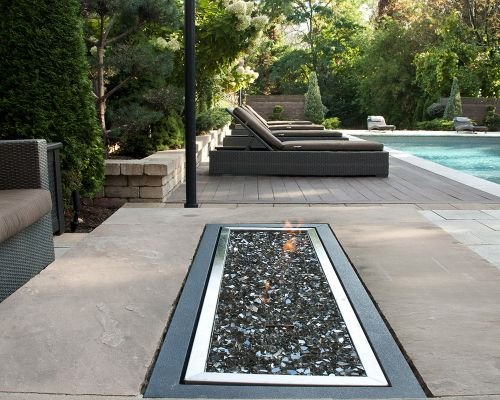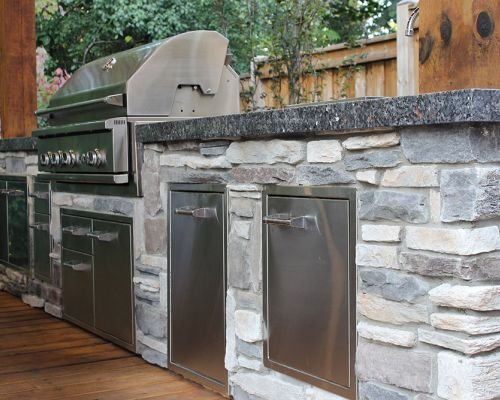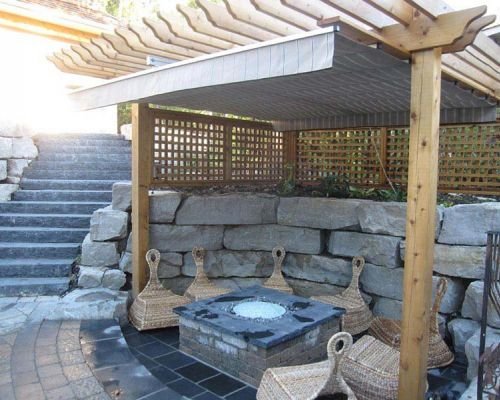Transforming Toronto yards into stunning, sustainable outdoor retreats isn’t just about aesthetics—it’s about balancing beauty, environmental responsibility, and client satisfaction. Can a landscape truly be both lush and eco-friendly? This approach hinges on thoughtful design principles: native plants that thrive with less water, rain gardens that manage stormwater naturally, and eco-friendly materials that ensure durability. The process emphasizes collaboration, where understanding homeowners’ needs leads to tailored, resilient landscapes that enhance lifestyle and support local ecosystems. Case studies reveal how low-maintenance native gardens and innovative water management solutions not only reduce resource consumption but also create vibrant, enduring spaces. The key lies in strategic planning, phased installation, and ongoing ecological stewardship. Can Toronto homeowners achieve outdoor retreats that are both visually stunning and environmentally responsible? Absolutely—when sustainable practices are integrated into every stage of the design and maintenance, resulting in landscapes that inspire pride and preserve beauty for generations to come.
Transform Your Toronto Outdoor Space with Expert Landscape Design
Looking to elevate your Toronto property’s outdoor appeal? Toronto Landscape & Design (TLD) offers exceptional services including natural stone features, water gardens, irrigation systems, and retaining walls. Our award-winning designers meticulously consider every detail to create a personalized landscape that complements your home and lifestyle. Whether you’re dreaming of a stunning backyard makeover, or a complete transformation, TLD is your trusted partner in turning outdoor spaces into stunning retreats. Contact us today at mike@torontolandscapedesign.com or call 1.416.644.0499 to begin your journey toward a beautifully designed landscape that stands out in Toronto.

Transform Toronto Yards into Eco-Friendly Outdoor Retreats: A Thoughtful Approach
Transforming Toronto yards into beautiful, sustainable outdoor retreats is about more than just planting flowers or adding decorative features. It’s a thoughtful process that combines aesthetic appeal with environmental responsibility, creating spaces that feel inviting, functional, and eco-friendly. The goal is to design outdoor areas that homeowners can enjoy today while supporting the local ecosystem and reducing long-term environmental impact.
Achieving this balance starts with strategic planning. Native plants play a central role because they are naturally adapted to Toronto’s climate, thriving with less water and fewer chemicals. Incorporating these plants not only reduces maintenance but also provides vital habitat for local pollinators, birds, and insects. When done correctly, these landscapes remain vibrant through seasonal changes, requiring minimal intervention and resources.
Client satisfaction hinges on understanding individual needs and preferences. Some homeowners seek low-maintenance gardens, while others want spaces for entertaining or supporting wildlife. Listening carefully to these goals and translating them into eco-conscious design choices ensures the yard reflects their lifestyle. When homeowners see their visions realized in a way that benefits both their environment and their enjoyment, their connection to the space deepens.
In Toronto’s often limited spaces, maximizing functionality without sacrificing beauty is a challenge. Thoughtful zoning, plant placement, and multi-purpose features like rain gardens or permeable paving help make every square foot count. These design elements not only enhance aesthetics but also improve water management, reduce runoff, and promote resilience against weather extremes.
Long-term resilience is a key consideration. Techniques like rainwater harvesting and drought-tolerant plants help manage water efficiently, lowering dependence on municipal supplies and protecting waterways. Choosing eco-friendly materials such as recycled pavers and sustainably sourced wood supports durability and minimizes ecological impact, ensuring the landscape remains attractive and sustainable for years to come.
Creating these outdoor retreats is an ongoing collaboration. Clear communication about sustainable practices and realistic maintenance routines encourages homeowners to care for their yard responsibly. When clients understand how their choices impact the environment and their space’s health, they become active partners in maintaining a vibrant, eco-conscious landscape.
Ultimately, transforming Toronto yards into stunning outdoor retreats demands creativity, knowledge, and teamwork. When every element—from plant selection and materials to water management—is aligned with sustainability and client satisfaction, the result is a space that enriches lives now and preserves its beauty for future generations.
Core Principles of Sustainable Landscape Design: Creating Beautiful and Environmentally Responsible Spaces
Core principles of sustainable landscape design revolve around creating outdoor spaces that are both beautiful and gentle on the environment. Native plants form the foundation because they are naturally adapted to Toronto’s climate, requiring less water, fertilizers, and chemical treatments. This not only simplifies maintenance but also supports local wildlife, providing food and shelter for pollinators, birds, and insects. When native species are prioritized, landscapes become more resilient, vibrant, and able to withstand seasonal changes with minimal intervention.
Water management is another key aspect. Incorporating rain gardens, permeable paving, and smart irrigation systems allows stormwater to be absorbed naturally, reducing runoff and erosion. Rainwater harvesting techniques enable homeowners to reuse water for irrigation, conserving resources and preventing pollution in local waterways. These practices foster landscapes that are not only visually appealing but also durable and capable of handling Toronto’s weather extremes over time.
Using eco-friendly materials such as recycled pavers, sustainably sourced wood, and natural stone plays a significant role. When thoughtfully integrated into a landscape’s layout, these materials enhance durability while reducing environmental impact. Proper zoning and placement ensure that these elements support both functionality and aesthetics, creating outdoor spaces that are both inviting and resilient. The careful selection of materials helps landscapes withstand weather challenges and age gracefully without excessive upkeep.
Designing for climate resilience involves selecting drought-tolerant plants, strategically placed shade trees, and windbreaks. These features lower water needs and chemical inputs, making landscapes easier to maintain year-round. By minimizing supplementary watering and chemical use, these choices promote healthier plants and a more sustainable environment. This approach ensures that the landscape remains vibrant and functional, even during periods of drought or extreme weather, reinforcing long-term ecological health.
The success of sustainable landscape design hinges on ongoing planning and care. Thoughtful initial choices, combined with regular maintenance routines rooted in ecological principles, keep landscapes thriving. Educating clients about native plant care, organic practices, and water conservation encourages ongoing stewardship. When homeowners embrace these principles, their outdoor spaces flourish not just aesthetically but also as vital components of Toronto’s ecological fabric, making sustainability an integral part of everyday life.

Implementation Strategies: Practical Steps to Harmonize Aesthetics and Ecology
Implementing a successful outdoor space begins with choosing native plants that thrive in Toronto’s climate. These plants require less water, fertilizers, and chemicals, making them easier to maintain and more resistant to seasonal changes. Selecting the right species creates a resilient foundation that supports local pollinators and wildlife while reducing ongoing effort.
Design layout and zoning are equally vital. Creating distinct areas for relaxing, entertaining, and privacy helps organize the yard and makes it inviting. Thoughtful placement of pathways, clusters of plants, and multi-purpose features like built-in seating or raised beds maximizes functionality without clutter. This strategic approach ensures the landscape flows naturally and aligns with how homeowners want to use their outdoor space.
Maintaining open communication with clients throughout the project keeps the design aligned with their priorities. Early discussions about low-maintenance needs, outdoor activities, or wildlife support help tailor the plan to their lifestyle. Being responsive during construction allows for adjustments that better reflect their vision, fostering a sense of ownership and satisfaction with the final result.
Eco-friendly materials and construction practices are now essential components. Using recycled pavers, sustainably sourced wood, or natural stone not only minimizes environmental impact but also enhances durability and visual appeal. Incorporating permeable surfaces and rain gardens improves stormwater management naturally, preventing runoff issues and adding visual interest. These choices seamlessly blend sustainability with style.
The installation phase is where planning turns into reality. Approaching it in phases allows for quality control and flexibility, addressing unforeseen challenges as they arise. Regular inspections and clear coordination among contractors help ensure each element is executed correctly, preserving the integrity of the design and sustainability goals.
Attention to detail during installation is crucial. Proper soil prep, precise plant placement, and thoughtful integration of features create a cohesive, functional landscape. This meticulous process guarantees that every element—from plant choices to hardscape—works harmoniously to meet aesthetic and ecological objectives.
Post-installation, ongoing maintenance rooted in ecological principles keeps landscapes thriving. Educating homeowners on organic pruning, mulching, and efficient watering encourages responsible care. When clients understand how to support their yard’s health, they help sustain its beauty and ecological value over time.
A well-executed, sustainable outdoor space is more than just a pretty yard; it’s a living environment that balances beauty, function, and responsibility. Thoughtful planning, collaborative execution, and ongoing stewardship turn a landscape project into a lasting retreat that meets both aesthetic and environmental goals.
Expert Insights and Case Studies: Real-World Proof of Sustainable Landscaping Success
Many Toronto landscape professionals highlight native plants and eco-friendly materials as the backbone of sustainable design. They point out that choosing local flora not only reduces water, fertilizer, and chemical needs but also supports the surrounding ecosystem. Case studies reveal that projects featuring native plant gardens often require less maintenance over time, demonstrating that beauty and resilience go hand in hand. These examples show that landscapes designed with local species can be both vibrant and environmentally responsible, meeting homeowners’ desires for low-impact, long-lasting outdoor spaces.
Real-world transformations provide compelling proof of these principles in action. One Toronto backyard was converted from a conventional lawn into a native meadow, complemented by rain gardens. The result? Significantly lower water bills and improved stormwater management, all while creating a lively, natural setting. Homeowners appreciated how this approach balanced aesthetic appeal with ecological benefits, proving that sustainable features can be both striking and functional. These projects challenge the misconception that eco-conscious landscaping means sacrificing visual impact.
Experts emphasize that clear communication and collaboration throughout the process make a big difference. When designers introduce clients to the advantages of native plants, rainwater harvesting, and eco-friendly materials early on, they foster understanding and enthusiasm. This shared knowledge leads to better-tailored solutions and smoother execution, with clients feeling more invested in the project’s success. Such partnerships ensure that sustainability isn’t just a buzzword but a tangible part of the landscape’s design and maintenance.
Stormwater management features like permeable paving and rain gardens have proven their worth over time. One case involved retrofitting an urban backyard with permeable pavers, which handled heavy rains effectively and prevented flooding. The natural textures and patterns added visual interest, proving that functionality can enhance aesthetic appeal. Integrating these features seamlessly into the landscape design demonstrates that practicality and beauty are not mutually exclusive—they can complement each other beautifully.
Ongoing maintenance becomes more manageable when native plants and eco-friendly materials are used. Regular care routines—such as organic pruning, mulching, and minimal chemical use—keep landscapes healthy and vibrant without excessive effort. Homeowners who adopt these practices often find their gardens require less intervention and become more resilient against seasonal challenges. This approach confirms that sustainability and ease of upkeep can coexist, turning eco-conscious landscapes into practical, enjoyable outdoor retreats.
Testimonials from Toronto clients reinforce the value of sustainable landscaping. Many report enjoying lush, low-maintenance gardens that support local wildlife and reduce resource use. Their stories highlight a deep emotional connection to their outdoor spaces, driven by the knowledge that their choices contribute positively to the environment. These experiences demonstrate that responsible landscaping isn’t just good for the planet—it also enhances personal well-being and pride in one’s home.
Design professionals agree that integrating eco-friendly practices into outdoor spaces delivers lasting benefits. When landscapes are built with resilience and environmental health in mind, they stand the test of time—both in appearance and function. The success stories from local projects serve as inspiring proof that sustainable design can be both visually stunning and genuinely responsible. By embracing these strategies, Toronto homeowners can enjoy outdoor retreats that are beautiful, eco-conscious, and built to thrive for years to come.

Conclusion and Next Steps: Building Resilient, Beautiful Landscapes for Toronto’s Future
Creating a sustainable, beautiful outdoor space in Toronto is within reach when design principles and eco-friendly practices come together seamlessly. Prioritizing native plants and sustainable materials not only supports local ecosystems but also reduces ongoing maintenance and resource consumption, making the landscape more resilient through Toronto’s seasonal changes. This approach ensures the yard remains vibrant, functional, and environmentally responsible year after year.
Collaboration from the start is key. When homeowners understand the benefits of native plants, rainwater harvesting, and permeable paving, they become active partners in shaping their outdoor retreat. Clear communication about how these choices enhance beauty and sustainability encourages buy-in and fosters a sense of ownership, turning a project into a shared success. This understanding makes the process more enjoyable and results in a landscape that truly reflects their lifestyle and values.
Water management plays a pivotal role in long-term resilience. Techniques like rain gardens and permeable surfaces help control stormwater naturally, preventing runoff and easing pressure on local waterways. These features not only improve drainage but also add visual interest, creating harmonious outdoor spaces where beauty and function coexist effortlessly. Incorporating stormwater solutions into the landscape design demonstrates that practicality can enhance aesthetic appeal without compromise.
Eco-friendly materials, such as recycled pavers, sustainably sourced wood, and natural stone, further support durability and ecological health. When thoughtfully integrated, these materials transform a yard into a resilient, stylish retreat that withstands Toronto’s weather extremes. Their use reinforces a commitment to sustainability while elevating the overall aesthetic, ensuring the landscape remains captivating over time.
The installation process is where careful planning turns concepts into reality. Phased approaches allow for quality control and flexibility, addressing unforeseen challenges smoothly. Regular inspections and close contractor coordination ensure every detail aligns with the original vision, preserving both the beauty and sustainability of the project. Attention to detail during this phase guarantees a cohesive, enduring landscape.
Maintaining these landscapes relies on ongoing stewardship rooted in ecological principles. Simple practices like organic pruning, mulching, and minimal chemical use help keep gardens healthy and vibrant with less effort. Educating clients about sustainable care routines empowers them to protect their investment and enjoy their outdoor space responsibly over the years.
The stories from Toronto homeowners highlight the rewards of sustainable landscaping. Many find joy in lush, low-maintenance gardens that support local wildlife and reduce resource use, deepening their connection to the environment. These personal experiences show that responsible design enhances not just the yard but also well-being and pride in their homes.
By embracing these strategies, Toronto residents can create outdoor retreats that marry aesthetic appeal with ecological integrity. Thoughtful design, collaborative execution, and ongoing care turn sustainable landscapes into lasting legacies—spaces that inspire, support nature, and stand resilient through changing seasons. The future of outdoor design in Toronto is bright, sustainable, and beautifully attainable.